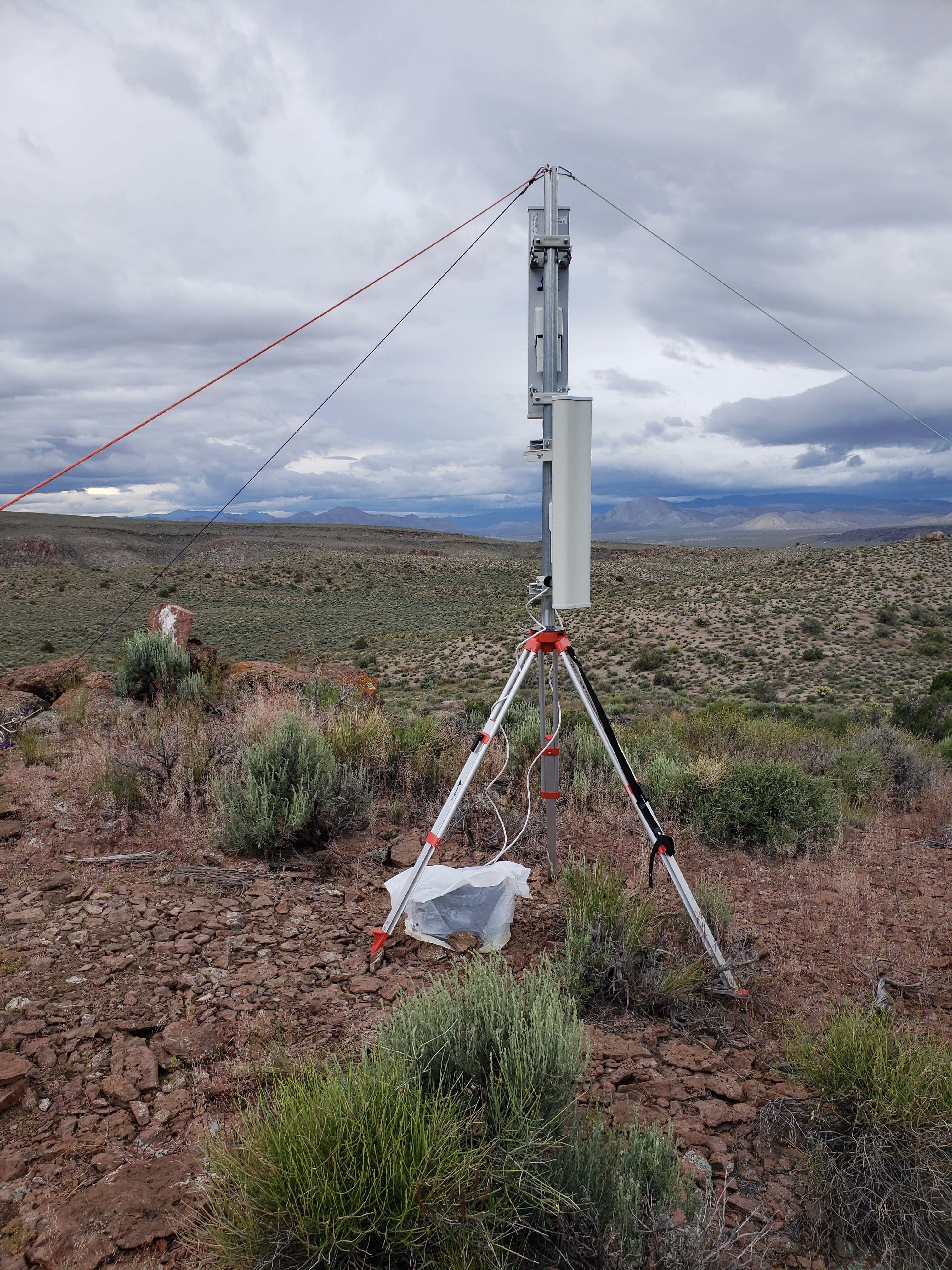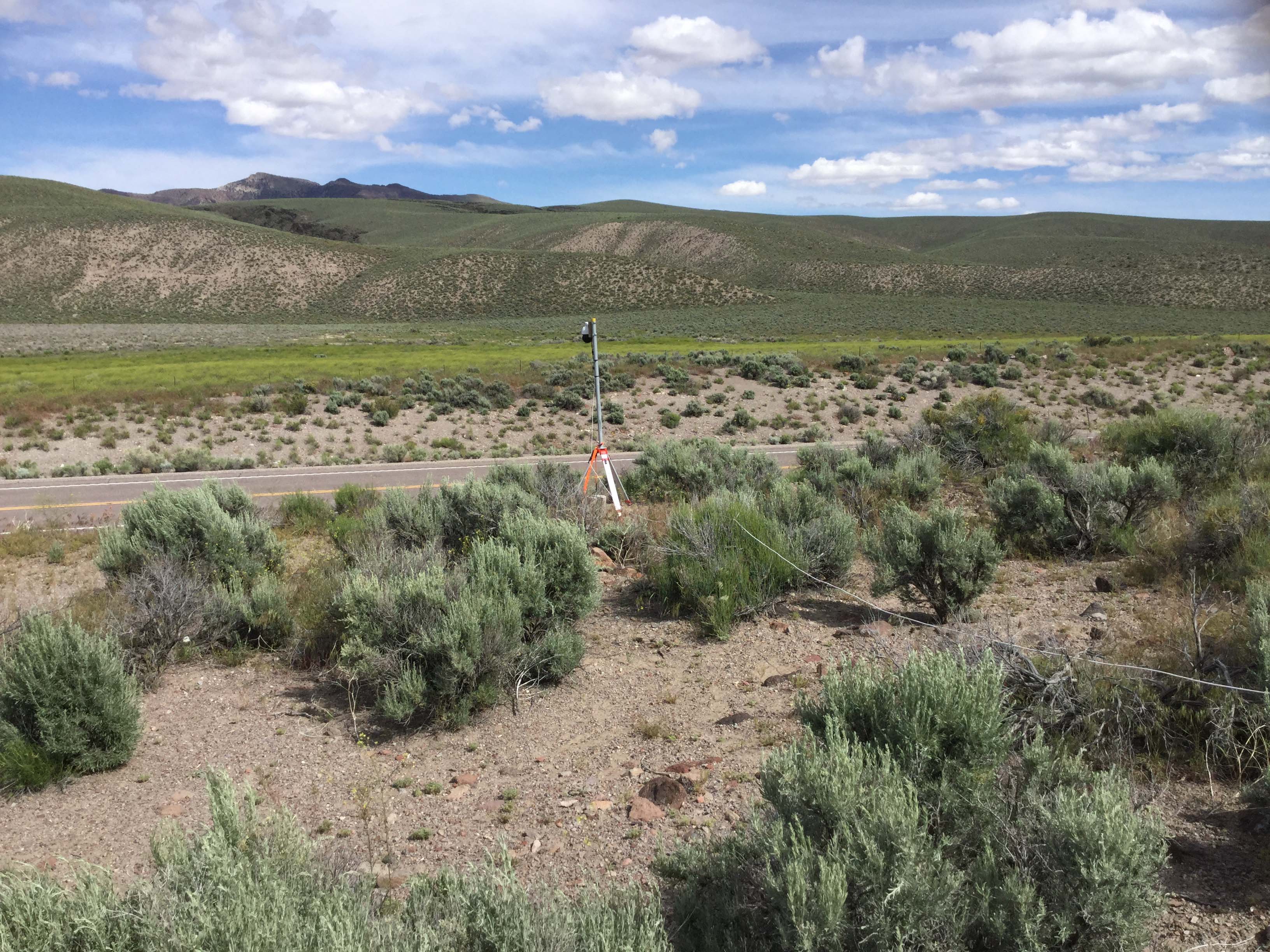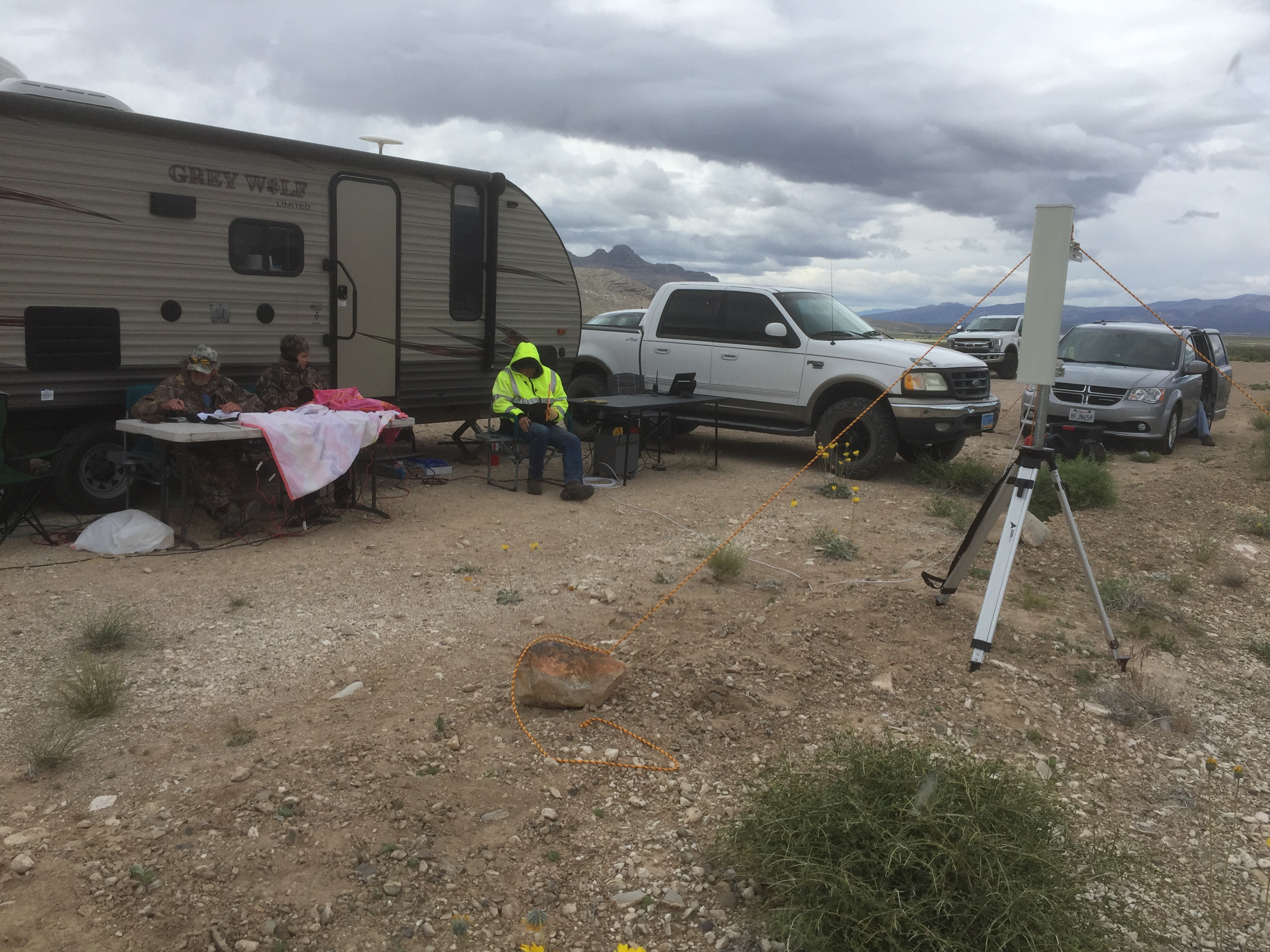
Archived Article
Nevada Open Road Challenge Mesh Network
The Nevada Open Road Challenge (NORC), LVMesh team arrived at Lower Fossil at 12:30 after a great cheeseburger and fries at the Alamo Diner in Alamo, Nevada. Steve Forinella, N6SFX; Thomas Turner, KI6CCW; and Wayne McGartlin, N7HWM proceeded to their stations at South Narrows, North Narrows High and Check Point 7 respectively. Tristan Davis and I (Tom Davis, KB7HTA) parked his truck as close as we could to a possible path leading up to Lower Fossil. We collected all of the necessary equipment and made our way up to the relay site. The initial climb was a little bit of a challenge as we had to work our way around some boulders to find the best way up. The remaining two-thirds of the climb to the top was strenuous with all of the gear, but relatively easy to walk. The node was set up, connected to power and tested quickly at 1:40 pm. The sun was out and the power box began taking a charge from the solar panel. Tristan proceeded to secure the relay node with polyethylene rope tie downs and rocks. I headed down the hill to check-in with the rest of the team.
On the way down the hill, I received a call on FRS channel 7, our communication channel, about Steve having difficulty finding his station location at South Narrows. We discussed the location a bit and he was on his way. I received another call from Thomas about a node not working. After a short discussion, I decided to go to his location and help troubleshoot the problem. I arrived at 2:25 pm and we began looking into the problem. After about half an hour we determined a couple of POE cables were bad, replaced them and all was working as expected; disaster averted.
At 3:30 pm I headed toward the locations of camera 1 and camera 2 to talk with Wayne and Steve. Wayne at Check Point 7 had everything set up and was in the process of testing the mesh node and Pan Tilt Zoom (PTZ) camera. After a short discussion about the pointing of the node toward Thomas at North Narrows High, I moved on toward Steve’s location. When I arrived, Steve was in the process of setting up his PTZ camera and node. The location we had originally picked was challenging, so Steve found a location a bit lower and closer to South Narrows. I expressed concern about the location being able to connect to the Lower Fossil relay node; but all things considered, it was the best choice and we would address any problems later. It was now after 4:00 pm and I had not setup my nodes at the Finish/Start line and South Pitts area. Therefore, I took off for those locations post haste.
I arrived at the NORC Finish/Start line at 4:40 pm and met with Jim Gollahon, KG7OUI about setting up a node and VoIP telephone for communications with our node sites. He was receptive to the idea, so one was quickly setup and tested. I moved on to the South Pitts area, set up a node and tested the link at 5:10 pm. Unfortunately, all the sites I tested in the South Pitts area were no goes; it seems the location of the Lower Fossil relay node was not line-of-sight.
The fallback plan was to use the Finish/Start line to display race video. To that end, I went back and explained the situation to Jim, who was very supportive of my efforts. After a short while, I setup a better node and was able to do an end to end test of the NORC Mesh Network along with the VoIP telephone and PTZ camera at 6:15 pm. As feared, I was not able to connect with Steve at South Narrows and receive video. Clouds started moving in and the sun disappeared, so we called an end to testing at about 7:00 pm and agreed to light up the network the next morning at 6:00 am.
Overnight, we had wind and rain at the NORC Finish/Start line and by 5:30 am, when I woke, it was getting colder. The rain had stopped, so I setup all the equipment for the race; VoIP telephone, computer and a TV for displaying race video. The TV didn’t stay out long, because the strong winds kept knocking it over. Therefore, the computer was used to display race video. At 6:00 am I turned on the mesh node and waited for the rest of the network to come up. Lower Fossil (manned by Tristan) came up at about 6:02 am and the rest of the network was operational by 6:30 am. Network telephone communications was established with Check Point 7 shortly thereafter. Camera video was established by 6:45 am. In the early morning hours, Steve moved his equipment to Check Point 8, which was the fall back location if South Narrows did not pan out. Shortly after 7:00 am, everything was operational except one VoIP telephone connection to Thomas on North Narrows High. Telephone communication was established later in the day.
Due to the weather, wind and heavy rain, the race cars were limited to 70 – 89 MPH depending on road conditions. The NORC Mesh Network as setup worked flawlessly; it provided VoIP telephone communications and provided race video at the Finish/Start line during the race. The number of people who were able to view the race video was limited due to the small number of people allowed at the Finish/Start line. The NORC Mesh Network was disassembled about noon for the trip home.
The concept of using a mesh network for race events was proven twice by the LVMesh Group; once for the Corporate Challenge Bicycle Race and again at the NORC event. In both of cases above, very few people were actually able to view the event. Considering the effort required to setup a mesh network for such events, if a mesh network were to be used for an event in the future, more emphasis needs to be placed on permitting large numbers of people to watch the action.

Nevada Open Road Challenge Race Start Headed North
2019 Nevada Open Road Challenge start headed back North from Hiko, Nevada.

Lower Fossil Relay Node manned by Tristan Davis
Lower Fossil Relay Node consists of two Ubiquiti Rocket M2 radios with 90° sector antennas, power box (described in Project section of website) and Netgear GS-105e VLAN switch.

North Narrows High Relay Node manned by Thomas Turner, KI6CCW
North Narrows Relay Node consists of two Ubiquiti Rocket M2 radios with 90° sector antennas, power box (described in Project section of website) and Netgear GS-105e VLAN switch.

Check Point 7 Manned by Wayne McGartlin, N7HWM.
Check Point 7 Node consists of a TP-Link CPE210 node, power box (described in Project section of website) and Netgear GS-105e VLAN switch. Additional equipment used was a VoIP telephone and PTZ camera.

Check Point 7 PTZ Road Camera
The camera is a HD 1080p PTZ Outdoor Speed Dome IP Pan Tilt 30X Zoom IR Network Security Camera mounted on a weighted base.

Check Point 8 Manned by Steve Forinella, N6SFX
Check Point 8 Node consists of a TP-Link CPE210 node, power box (described in Project section of website) and Netgear GS-105e VLAN switch. Additional equipment used was a VoIP telephone and PTZ camera.

Finish/Start Line Mesh Node Manned by Tom Davis, KB7HTA
Finish/Start Line Node consists of an Ubiquiti Rocket M2 radio with 90° sector antenna, 105 Amp/Hr homemade power box and Netgear GS-105e VLAN switch. Additional equipment used was a VoIP telephone, laptop computer and TV.

North Narrows High Net Control Manned by Thomas Turner, KI6CCW
North Narrows Net Control consists of a TP-Link CPE210 node, power box (described in Project section of website) and Netgear GS-105e VLAN switch. Additional equipment used was a VoIP telephone and computer. Nice and dry.